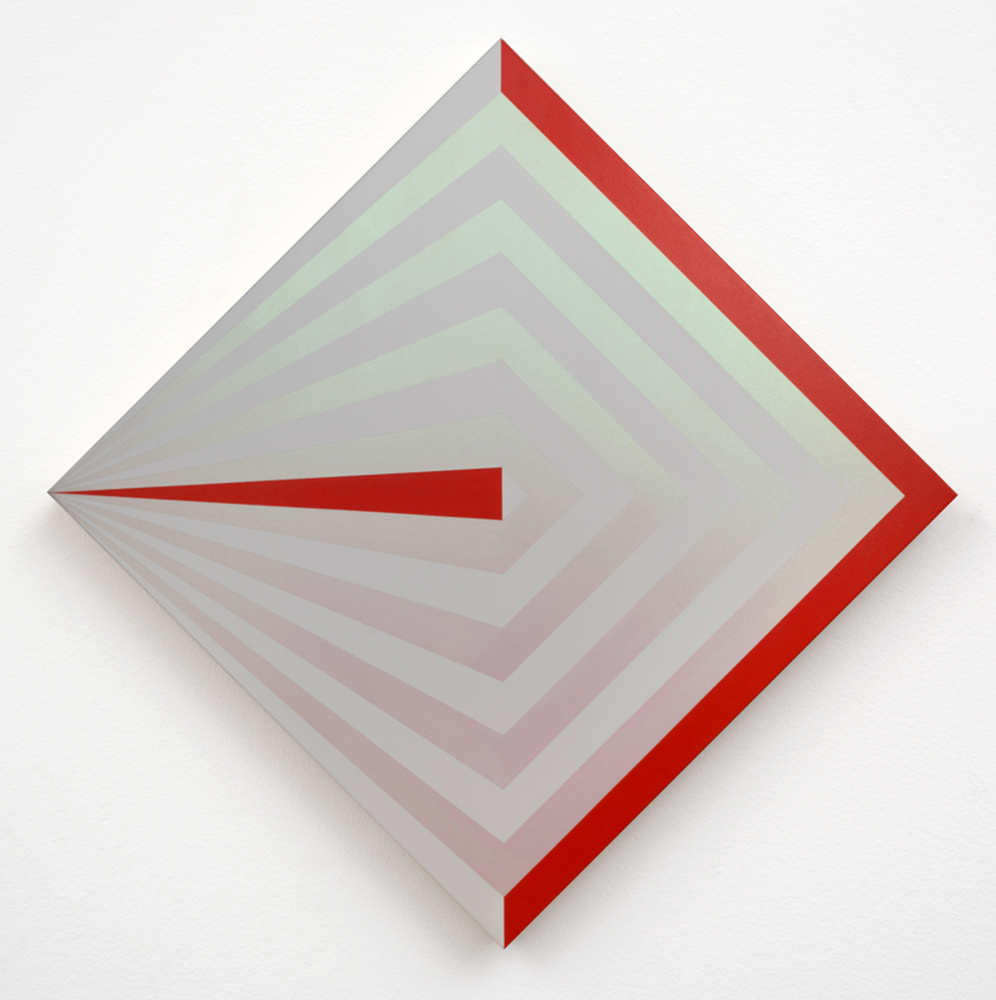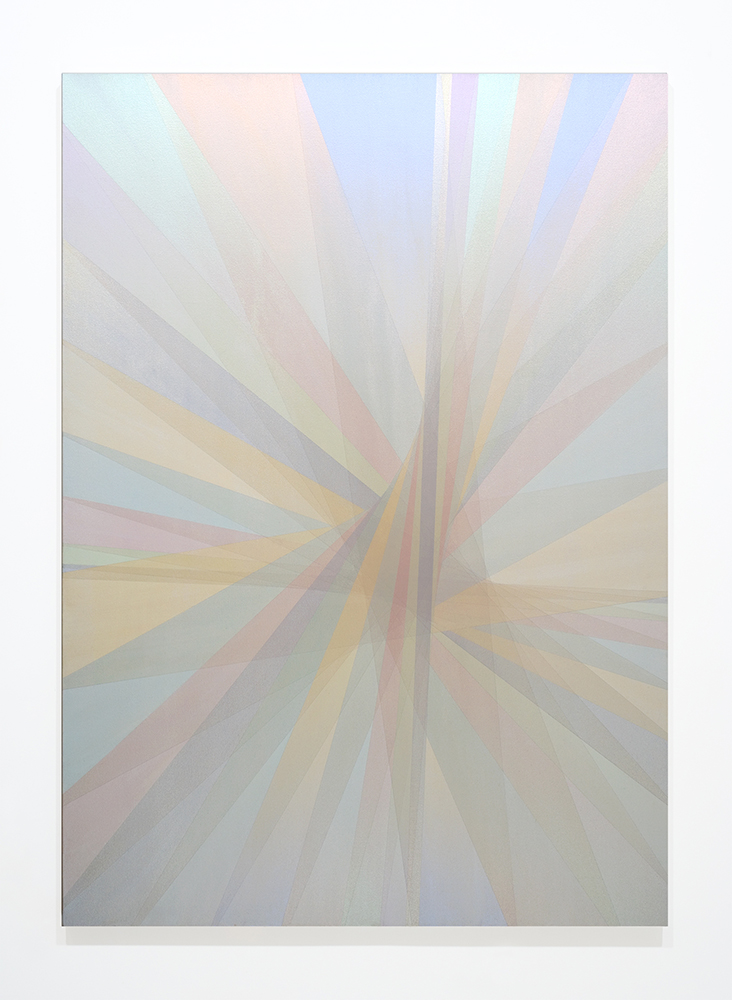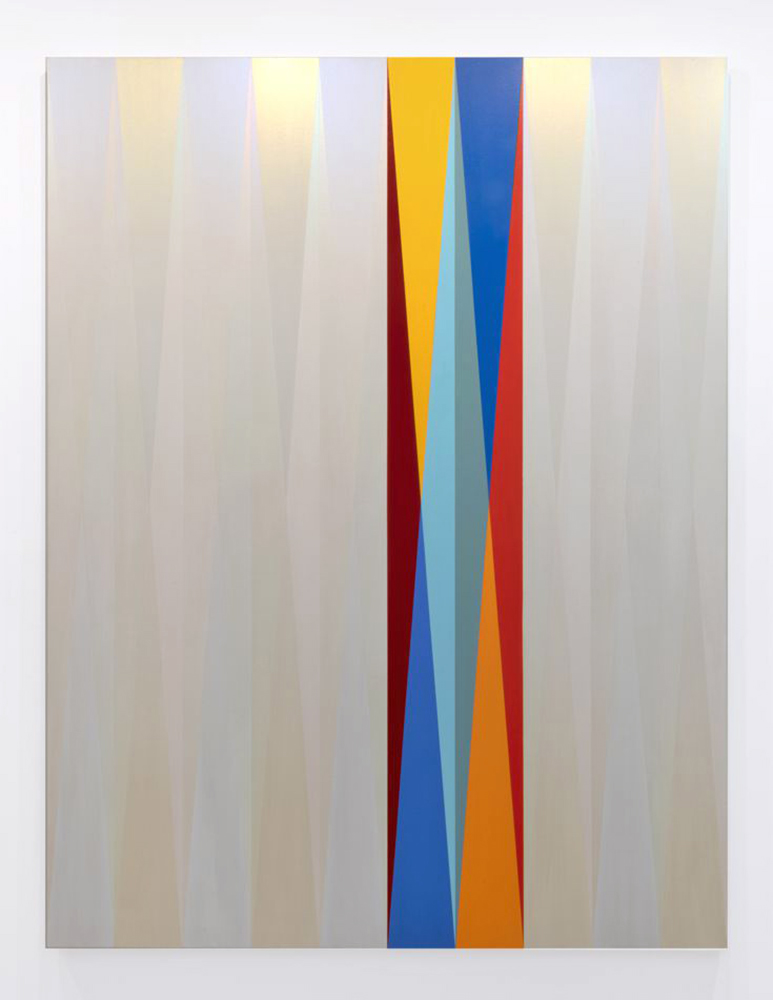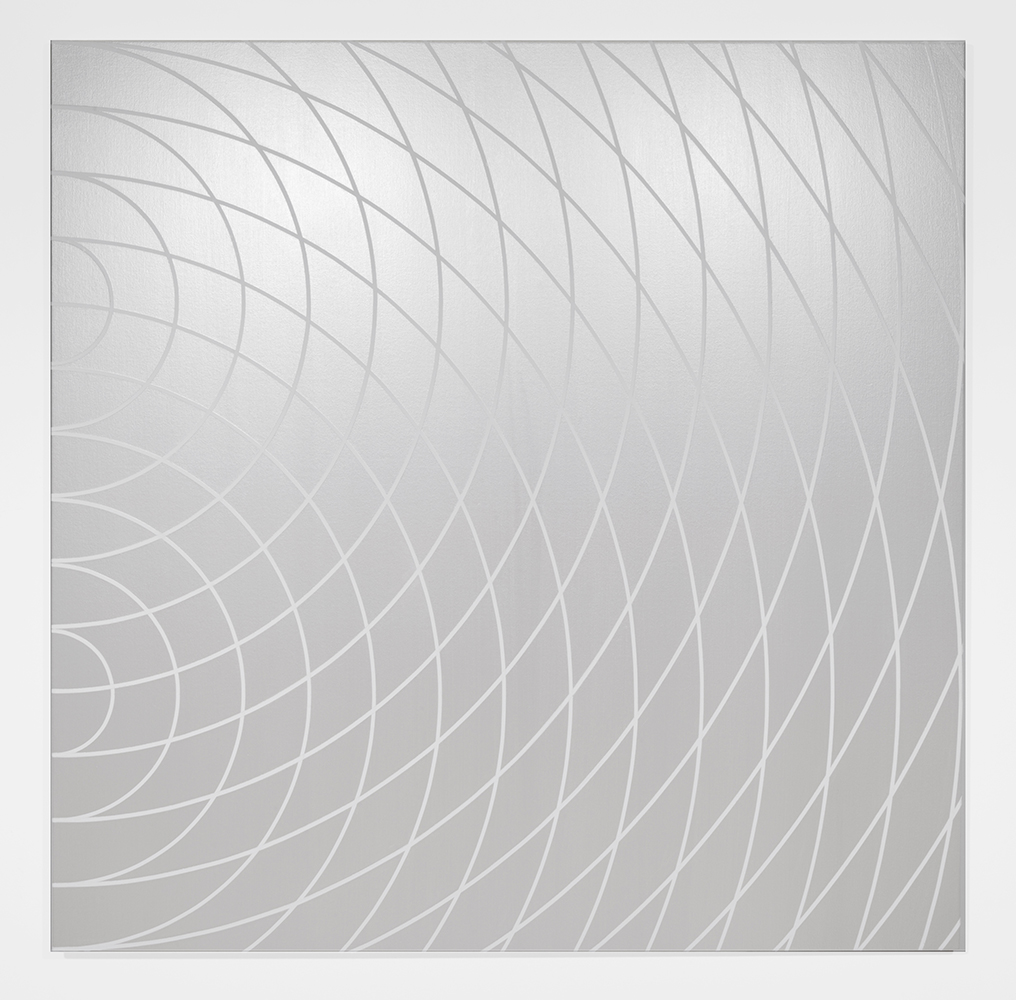Interview with Steven Salzman
Inaugural show at Melissa Morgan Fine Art Gallery
May 2022
By Lorien Suárez-Kanerva
Melissa Morgan Fine Art Gallery (Palm Desert, California) on April 16th opened Steven Salzman’s inaugural exhibition. While discussing his work in the interview, Salzman drew connections between chromatic optical shifts, formal compositional elements and his conceptual thought process.
As an artist, the selection of interference paint is a key material element inducing perceptual movement by employing color variability at different viewing angles. Salzman draws principally from geometric abstraction using elements like line, form and space and inspiration from scientific principles on the nature of the universe alongside space and perception.

on canvas, 84 x 64 in
LSK: What concepts and features are important in your work? Do you favor specific art movements or theories?
Salzman: Abstract-Expressionism is at the core of my work. Seeing a significant etrospective of A-E as a high school student inspired me to become a painter. Over time, my major takeaways have been the Pollock “all-over” fields, Newman’s bold simplicity and Reinhardt’s color exploration and later the work of Bridgette Riley, early Frank Stella and Mondrian. Historically, I love Classical painters like Raphael, Poussin and Ingres, Impressionism and Post-Impressionism.
I read much of the theory relevant to my work, and, if anything, this was something I reacted against. Formalism, ultimately, seemed too rigid and Neo-Plasticism too utopian. On the other hand, the influence of the idea of formally-oriented abstraction being inherently “democratic” and accessible is another element at my core. Science and religion are favorites, especially relativity, quantum theory, and the Torah.

LSK: How does a “democratic and accessible” approach inform your work? Salzman: The foundational source of inspiration for my work is vision, looking, seeing.
When I first committed to being a painter, as a student, after a few months, my vision changed. Everything was sharper, brighter – colors richer, space more complex. It was a wonderful experience that persisted for me. When I looked at the past’s great paintings, I didn’t see religious, historical or symbolic content. I saw the composition, spatial exploration and color arrangement. The “democratic and accessible” is a general framework of perspective. The viewer would have access to the work by looking at it without any prior, specialized thematic knowledge of history. I think it’s what Frank Stella referenced when he said, “What you see is what you see”.

LSK: Are there artworks that indicate significant features in your artwork? Salzman: Angular Momentum Made Me is a good example. The composition’s stripes are staggered around the canvas to create a sense of rotation and movement. The movement compliments the color-shifting translucence of the interference paint. I was doing a lot of yoga, and the imagery suggested a figure in transition, moving through poses. It is a physical, literal connection to the paintings’ color transitions as the viewer moves around them. The title refers to rotational movement in physics, which is fundamental in creating our reality.
The “Made Me” part of the title copies the signature of classical Greek artists, who wrote their name and then “made me” as if the artwork was talking to the audience, explaining its origin. That connects my work to both modern particle physics and the classical tradition.

LSK: Alec Longmuir, MMFA gallery’s art director, noted your interest in Science-Fiction.
Would you like to comment on this?
Salzman: To the extent I am a fan of the genre, it is the optimistic, advanced technology version vs the bleak dystopian one. The streamlined geometry of the spaceships, gleaming, clean cities, and tight, bright clothes all have influenced my visual sensibility. One of the paintings in the show at MMFA gallery, From Edge to Wedge, has an alternate title, Captain Kirk’s Art Collection. The idea of limitless scientific progress is a fundamental source of inspiration for my aesthetic.
Another painting I would mention is The Colors of Anti-Matter, which perhaps has a different direction of inquiry. The issue is the dialogue and correlations between the interference palette and the bright, saturated palette in that painting. I think of it as exploring translation and the colors as elements of a language. The title is a “romantic” description of the dynamic of the painting. Titles are significant in my work.

LSK: Would you like to remark on some of these titles?
Salzman: The titles connect to what I thought when I did the work, ruminating on words and phrases. The first important one is I Awoke With a Lingering Doubt. It’s a double portrait of Debbie Harry from when I was very involved with photo-deconstruction. I used a promotional headshot to clash photography with as many modes of representation as I could pack into the painting. The composite image is fractured, suggesting dislocation and anxiety in concert with my mental state.
Fast-forward to more “mature” works, and I think of The Golden Age, Angular Momentum Made Me, and Ellen Descending a Staircase. I have already described the first two to relate my paintings to classicism. Still, they suggest similar fractured anxiety, expressed by the motion and translucence of the imagery. Ellen Descending a Staircase is from the same group (and among my personal favorites), and I had been trying for some time to do a homage to Nude Descending a Staircase by Duchamp. The movement described in that series was directly related to a human figure moving through time, particularly a modern figure living in our breathless, technological world. To connect back to I Awoke With a Lingering Doubt, The Good Insomnia is a title that refers to the ongoing unease, and the usually unwelcome sleeplessness, that informs my hard-edged, systemic paintings. In that particular case, my inability to sleep resulted in a breakthrough in my work. The Illusion of Macro-World Symmetry opposes visual even-ness with the reality of its technical impossibility. The laws of nature undermine basic intuition.
My titles serve as a poetic counterpoint to the geometry and a complementary element describing my impulse to bring tranquility to chaos.

LSK: In conclusion, what do you want viewers to know about your artwork and your approach to making art?
Salzman: Again, “Space is the place”. My focus has always been exploring and creating pictorial space: two and three-dimensional and murky, hard to locate spaces, flat and illusionistic. I strive to create imagery that allows me maximal freedom to explore anything I want, formally, thematically and emotionally. I want to make magic – to make spaces that evoke perception and emotion for viewers.
*Article first published in Whitehot Magazine on May 24, 2022.




